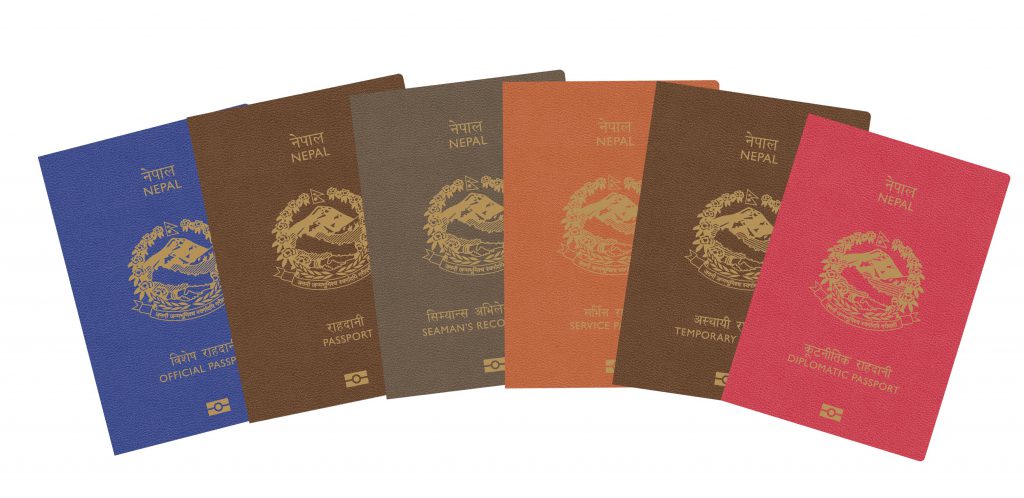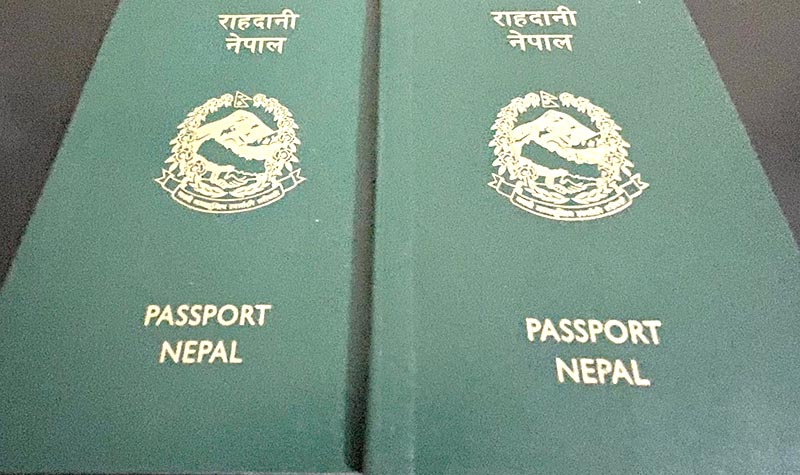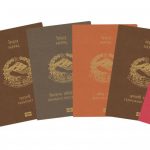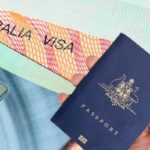From 2021, November 17th, the Nepalese government started issuing electronic passports (e-passports). Since all preparations have been completed, the passport department has begun issuing Nepalese e-passports. Now you can apply for your Nepalese e-passport.
The transformation of the machine passport from MRP to e-passport have built a safer confidence amongst the Nepalese people. But for how long? Will the new generic passport able to fill in the global ranking that the Nepalese people have been longing for or will it keep the ranking slated behind the Palestine passport.
In Nepal, a 102-year-old academic and cultural expert became the first to receive the chip-based identification document on Wednesday. The first e-passport personalisation centre was inaugurated at Tripureshwor, Kathmandu.
What makes the Nepalese e-passport distinct?
Biometric details are stored in a microchip in a biometric passport, also called a biometric passport. On each side of the device, there are chips and antennas.
In the machine-readable zone of the page with the picture of MRAP, you can see a symbol for optical character recognition. A passport reader machine allows you to see essential details on your passport as it reads it. As well as these, electronic chips and antennae are also part of the electronic passport.
Fingerprints and pictures are stored on the chip. Once the chip is locked with these details, no changes or additions are made. This is Nepal’s first electronic passport. It is made of polycarbonate. Invisible to the naked eye, data cables include polycarbonate cables that contain electrical chips and antennas.
There are two types of ordinary passports: ones that have 34 pages and ones that have 66 pages. Electronic passports can be divided into seven categories: diplomatic, extraordinary, temporary, ordinary, and Siemens.

Read Also: Australian Passport ranked the 7th Most Powerful Passport in the World
By replacing the MRP passport with an electronic one, Nepali citizens will travel internationally more easily. Passengers of Nepal will have the option of travelling by international standards after the electronic passports are distributed. Nepali citizens with MRP passports can now be issued electronic passports instead of waiting for hours and experiencing difficulties as they undergo various tests.
Starting Wednesday, the Department of Passports will issue biometric passports, a significant development in Nepal’s country’ passport system. The previous KP Oli government cancelled three consecutive global tender notices last year, but the department is now preparing to issue e-passports to replace machine-readable passports (MRPs). IDEMIA is the company that prints the new passports.
In 2010, Nepal switched from handwritten to machine-readable passports, and now, 11 years later, Nepal is going to issue the second generation of e-passports. National officials say this gives Nepal a competitive advantage over its competitors.
What is the strength of the Nepalese passport after issuing it as an e-passport?
Nepal is ranked 110th in the recent Henley Passport Index and Palestine as the world’s weakest passport. Many Nepalese who travelled abroad should not be surprised by this ranking. However, it is still of concern, considering Nepal is no longer a conflict nation. Today it has been involved in no large-scale criminal or terrorist incidents and has a stable political system.

However, Nepal’s poor economic status, weak immigration system, conflict, and Nepalese overstaying their visas abroad have ranked Nepal lower than other countries. The new passport will be among the best, most reliable, secure, and hassle-free for travellers in technical specifications. You can also avoid repeated testing by touching the electronic passport machine.
Likewise, in international airports with electronic doors, Nepali citizens will be able to move through those doors with ease by looking at the face sensor of the carrier when the door opens for traffic.
In terms of security, design, and other features, Nepal’s passport will be one of the best in Asia, according to Dornath Aryal, director-general of the Department of Passports.

From where you can collect your new Nepalese e-passport?
A new shade of biometric passport will be available from the department. Passport covers will change from green to chocolate brown.
A crimson-red cover will cover diplomatic passports, a navy blue cover will cover official passports, and a tiger orange cover will cover peacekeeper passports. Temporary passports are going to be chocolate-brown, and seaman’s logbooks will be slate-brown. Each passport booklet’s front page is specified to bear the coat of arms of the nation.
As Arjun Kant Mainali, former joint secretary at the Ministry of Foreign Affairs, said, Nepali passports will rank higher once they are updated to the global standard. In addition to preventing misuse and theft of diplomatic passports, the new passport is expected to improve security.
Though Foreign affairs have remained adamant towards the passport strength and uplift in the global ranking the reality awaits. So, till then if you have any related queries associated with the e-passport drop us your questions in the comment section below.










